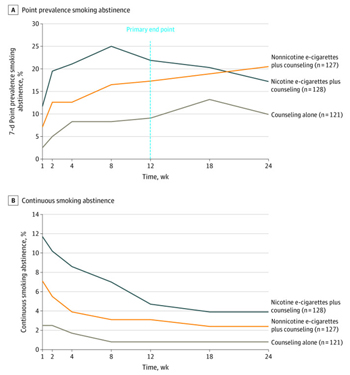Predicting the long-term effects of electronic cigarette use on population health: a systematic review of modelling studies
Objective: To systematically review and synthesise the findings of modelling studies on the population impacts of e-cigarette use and to identify potential gaps requiring future investigation.
Biomarkers of exposure and potential harm in exclusive users of electronic cigarettes and current, former, and never smokers
Electronic cigarette (EC) aerosol emissions generally contain fewer and lower concentrations of harmful and potentially harmful constituents, compared with cigarette smoke. Further studies are needed to establish whether decreased emissions translate to reduced health risks for EC users.
Common adverse events of electronic cigarettes compared with traditional nicotine replacement therapies: A systematic review and meta-analysis
Issues: Established literature suggests that electronic cigarettes (EC) are more effective than traditional nicotine replacement therapies (NRT) as a smoking cessation aid, but the factors that mediate this difference remain poorly understood. We examine how adverse events (AE) associated with EC use relative to NRTs differ, with the view that differences in AEs experienced may drive differences in use and compliance.
Estimation of the global number of e-cigarette users in 2020
The combustion of tobacco is the main cause of tobacco-related morbidity and mortality. E-cigarettes are potentially disruptive innovations with considerable potential for population health. A key question is whether e-cigarettes are replacing tobacco cigarettes, which requires mapping their prevalence. Collecting information on nicotine use is difficult for many countries due to cost. The objective of this study was to derive a global estimate of e-cigarette use (vaping).




